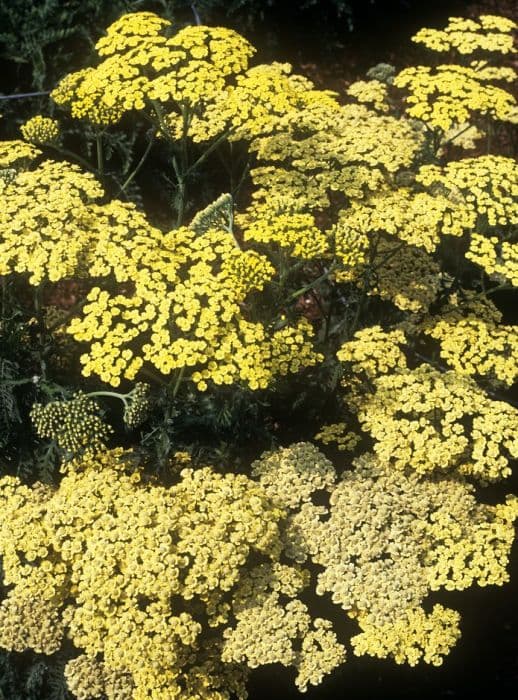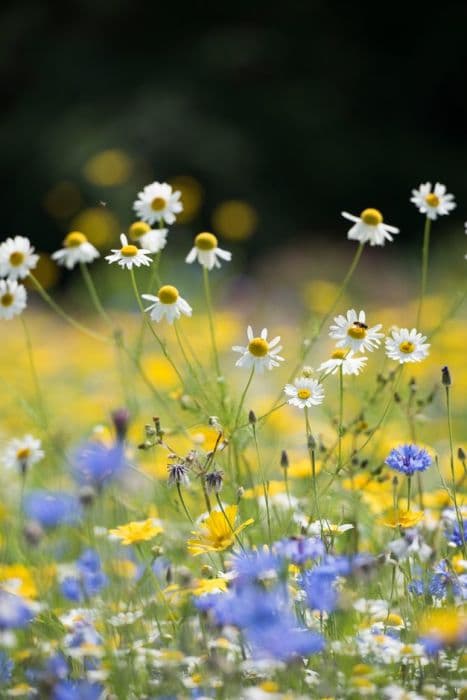Chrysanthemum 'Pennine Canary' Chrysanthemum 'Pennine Canary' (29c)

ABOUT
'Pennine Canary' is a half-hardy perennial to 1.1m in height, with lobed, aromatic foliage and bright canary-yellow flowers to 7.5cm in width
About this plant
 Names
NamesFamily
Asteraceae.
Synonyms
Cushion mum, Florist's Daisy, Hardy Garden Mum.
Common names
Chrysanthemum 'Pennine Canary'.
 Characteristics
CharacteristicsLife cycle
Perennials
Foliage type
Deciduous
Color of leaves
Green
Flower color
Yellow
Height
2 feet (60 cm)
Spread
2 feet (60 cm)
Plant type
Herb
Hardiness zones
5
Native area
Asia
Benefits
 General Benefits
General Benefits- Aesthetic Appeal: The Chrysanthemum 'Pennine Canary' adds vibrant color and texture to gardens with its bright yellow blossoms.
- Seasonal Interest: Blooms in the late summer to fall, providing color when many other plants are fading.
- Pollinator Attraction: Attracts bees and butterflies, which are beneficial for the pollination of gardens and ecosystems.
- Low Maintenance: Once established, they require minimal care beyond the occasional watering and deadheading.
- Versatility: Can be used in borders, containers, and as cut flowers for indoor decoration.
- Drought Tolerance: Capable of withstanding periods of low water once fully established, making it suitable for xeriscaping.
- Frost Resistance: Hardy in many environments and able to withstand light frosts, prolonging their blooming season.
- Long Bloom Period: Offers a long-lasting display of flowers, often from late summer through the fall.
 Medical Properties
Medical PropertiesThis plant is not used for medical purposes.
 Air-purifying Qualities
Air-purifying QualitiesThis plant is not specifically known for air purifying qualities.
 Other Uses
Other Uses- Floral Photography: Chrysanthemum 'Pennine Canary' provides a vibrant subject for close-up photography due to its unique color and complex petal structure, making it popular among floral photographers.
- Natural Fabric Dyes: The bright yellow petals of Chrysanthemum 'Pennine Canary' can be used to produce a natural dye for coloring fabrics and yarns.
- Craft Projects: Dried petals can be utilized in scrapbooking or to make potpourri, adding a splash of color and a faint fragrance to various craft projects.
- Livestock Feed: In some regions, the foliage of chrysanthemums, which is not treated with pesticides, may be used in moderation as a component of livestock feed.
- Garden Pest Repellent: Chrysanthemum 'Pennine Canary', like many other chrysanthemums, contains compounds that can deter certain garden pests, making it a natural insect repellent when planted among other crops.
- Festive Decorations: Fresh or dried flowers can be used to create decorative garlands or centerpieces for special occasions and holidays.
- Bookmarks and Stationery: Pressed Chrysanthemum 'Pennine Canary' flowers can be used to embellish homemade bookmarks or to add a unique touch to handmade greeting cards and stationery.
- Edible Garnish: While keeping in mind that not all chrysanthemum varieties are edible, the petals of certain non-toxic varieties can be used as a colorful garnish for culinary dishes after proper identification.
- Artistic Inspiration: The intricate form and color of Chrysanthemum 'Pennine Canary' provide inspiration to artists for botanical illustration and other forms of art.
- Teaching Tool: The plant can be used in educational settings to teach botany and horticulture, demonstrating plant growth, reproduction, and the importance of bees and other pollinators.
Interesting Facts
 Feng Shui
Feng ShuiThe Chrysanthemum is not used in Feng Shui practice.
 Plant Symbolism
Plant Symbolism- Loyalty: In many cultures, chrysanthemums are symbols of loyalty and devoted love.
- Longevity: Due to their hardiness and perennial nature, they often represent long life and enduring character.
- Happiness: The bright, cheerful flowers are commonly associated with joy and optimism.
- Rejuvenation: As flowers that bloom well into the fall, chrysanthemums can signify the idea of rebirth or bouncing back.
- Friendship: The flower is seen as a token of support and friendship, with particular emphasis on honest and true-hearted relations.
- Nobility: In some Asian cultures, the chrysanthemum is a noble flower, often associated with royalty and aristocracy.
- Purity: White chrysanthemums, in particular, are often used to convey purity and innocence.
 Water
WaterMums, including the Chrysanthemum 'Pennine Canary,' prefer evenly moist soil, so it's important to water them thoroughly when the top inch of soil feels dry to the touch. Water the plant at the base to avoid wetting the foliage, which can lead to fungal diseases. During active growth, especially in the warm months, this might mean watering once every 2-3 days, but always check the soil moisture first. As a general guideline, provide about one gallon of water per plant per watering session, but adjust according to weather conditions and your particular soil's drainage properties. Reduce watering in the winter when the plant is dormant.
 Light
LightMums thrive in conditions with full sun to partial shade. The ideal spot for Chrysanthemum 'Pennine Canary' is where it can receive at least 6 hours of direct sunlight daily. If you're growing it indoors, place it near a south-facing window.
 Temperature
TemperatureMums, including the Chrysanthemum 'Pennine Canary,' can tolerate temperatures as low as 32 degrees Fahrenheit without damage. They perform best in temperatures between 60 and 75 degrees Fahrenheit. Avoid exposing them to temperatures above 95 degrees Fahrenheit for prolonged periods to prevent heat stress.
 Pruning
PruningPrune Chrysanthemum 'Pennine Canary' to maintain shape and encourage bushier growth. Pinch back the tips when the plants are 6 inches tall and continue to do so every 2-3 weeks until midsummer. This helps to promote more branching and a fuller plant. The best time to prune is after the spring frost has passed and before the plant sets buds for fall blooming.
 Cleaning
CleaningAs needed
 Soil
SoilMums, such as Chrysanthemum 'Pennine Canary', thrive in well-draining, fertile soil mixed with compost. The ideal pH for this mum is slightly acidic to neutral, between 6.0 and 7.0. Amend heavy clay or sandy soils with organic matter to improve texture and nutrient content for optimal growth.
 Repotting
RepottingMums like Chrysanthemum 'Pennine Canary' should be repotted every one to two years. This ensures they have fresh soil and adequate room for root growth. It's best to repot in the spring before the growing season starts.
 Humidity & Misting
Humidity & MistingMums, including Chrysanthemum 'Pennine Canary', prefer moderate to high humidity levels. Aiming for around 50-70% relative humidity will create suitable conditions for these plants to thrive without extra moisture.
 Suitable locations
Suitable locationsIndoor
Ensure bright indirect light and well-draining soil for indoor Chrysanthemum 'Pennine Canary'.
Outdoor
Plant Mum 'Pennine Canary' in well-draining soil with full to partial sun.
Hardiness zone
5-9 USDA
 Life cycle
Life cycleThe Chrysanthemum 'Pennine Canary', commonly known as the Hardy Chrysanthemum or Mum, starts its life cycle as a seed, which, once sown in fertile, well-draining soil and given the proper warmth and moisture, will germinate. The seedling then emerges, developing its first true leaves and beginning the vegetative growth stage; during this time it develops a strong root system and grows foliage. Following the vegetative stage, as the days shorten and temperatures cool, typically in late summer to autumn, the plant enters the budding phase, where flower buds form and prepare to bloom. The blooming stage follows, where the 'Pennine Canary' variety displays its distinctive yellow flowers, attracting pollinators and potentially allowing for cross-pollination. After the flowering phase, the plant sets seeds if pollination has occurred, completing the reproductive cycle. Finally, as winter approaches, the above-ground part of the plant dies back, and the hardy chrysanthemum enters dormancy, with the roots surviving underground to regrow the next spring.
 Propogation
PropogationPropogation time
Spring-Early Summer
The most popular method of propagating Chrysanthemum 'Pennine Canary', commonly known as mums, is through division. This process is ideally carried out in the spring when new growth begins. To propagate by division, carefully dig up the entire plant, ensuring you lift as much of the root ball as possible. The root ball is then gently separated into smaller sections, each with several shoots and a healthy portion of roots. These divisions can be immediately replanted in well-prepared soil, spaced about 18 to 24 inches (45 to 60 cm) apart to allow for growth. It's important to water the new plants thoroughly after planting to help establish the roots in their new location.









